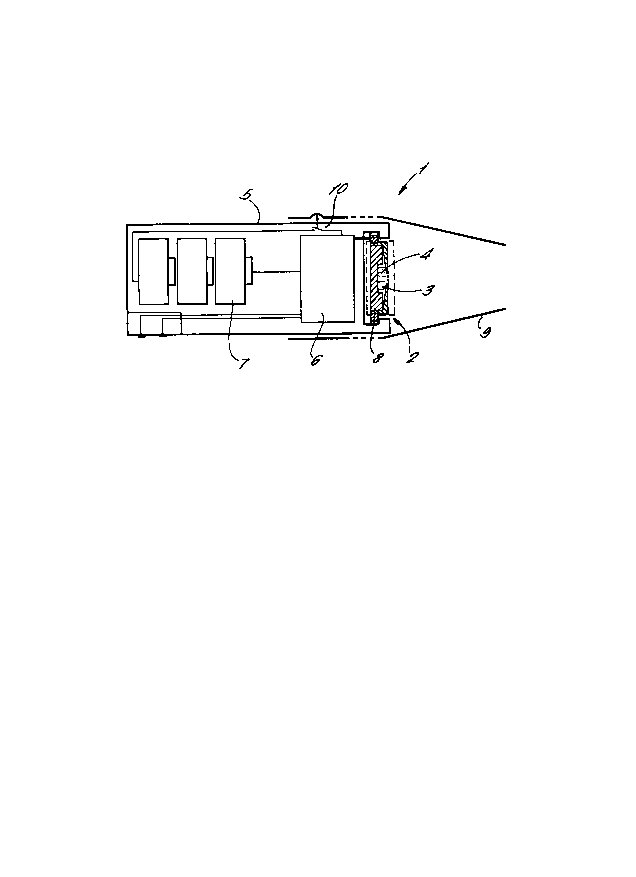Some of the information on this Web page has been provided by external sources. The Government of Canada is not responsible for the accuracy, reliability or currency of the information supplied by external sources. Users wishing to rely upon this information should consult directly with the source of the information. Content provided by external sources is not subject to official languages, privacy and accessibility requirements.
Any discrepancies in the text and image of the Claims and Abstract are due to differing posting times. Text of the Claims and Abstract are posted:
| (12) Patent: | (11) CA 2031907 |
|---|---|
| (54) English Title: | DISPENSING APPARATUS |
| (54) French Title: | APPAREIL DISTRIBUTEUR |
| Status: | Term Expired - Post Grant Beyond Limit |
| (51) International Patent Classification (IPC): |
|
|---|---|
| (72) Inventors : |
|
| (73) Owners : |
|
| (71) Applicants : |
|
| (74) Agent: | SMART & BIGGAR LP |
| (74) Associate agent: | |
| (45) Issued: | 1997-06-24 |
| (22) Filed Date: | 1990-12-10 |
| (41) Open to Public Inspection: | 1991-06-13 |
| Examination requested: | 1994-12-23 |
| Availability of licence: | N/A |
| Dedicated to the Public: | N/A |
| (25) Language of filing: | English |
| Patent Cooperation Treaty (PCT): | No |
|---|
| (30) Application Priority Data: | |||||||||
|---|---|---|---|---|---|---|---|---|---|
|
Dispensing apparatus (1) comprises a housing
(2) defining a chamber (3) receiving liquid (4) to be
dispensed and comprising a perforate membrane which
defines a front wall of the chamber. A vibrating
means (8) is connected to the housing and is operable
to vibrate the perforate membrane to dispense
droplets of liquid through holes (25) in the
perforate membrane. The housing comprises an
annular member (11) having a relatively thin inner
annular portion (68) connected to the perforate
membrane and a relatively thick outer annular portion
(66) connected to the vibrating means.
The apparatus is suitable for dispensing
pharmaceutical products as an atomised mist and
provides a hand-held inhaler for oral inhalation.
Note: Claims are shown in the official language in which they were submitted.
Note: Descriptions are shown in the official language in which they were submitted.

2024-08-01:As part of the Next Generation Patents (NGP) transition, the Canadian Patents Database (CPD) now contains a more detailed Event History, which replicates the Event Log of our new back-office solution.
Please note that "Inactive:" events refers to events no longer in use in our new back-office solution.
For a clearer understanding of the status of the application/patent presented on this page, the site Disclaimer , as well as the definitions for Patent , Event History , Maintenance Fee and Payment History should be consulted.
| Description | Date |
|---|---|
| Inactive: Expired (new Act pat) | 2010-12-10 |
| Inactive: IPC from MCD | 2006-03-11 |
| Inactive: IPC from MCD | 2006-03-11 |
| Grant by Issuance | 1997-06-24 |
| Notice of Allowance is Issued | 1997-01-21 |
| Request for Examination Requirements Determined Compliant | 1994-12-23 |
| All Requirements for Examination Determined Compliant | 1994-12-23 |
| Application Published (Open to Public Inspection) | 1991-06-13 |
There is no abandonment history.
| Fee Type | Anniversary Year | Due Date | Paid Date |
|---|---|---|---|
| MF (patent, 7th anniv.) - standard | 1997-12-10 | 1997-09-30 | |
| MF (patent, 8th anniv.) - standard | 1998-12-10 | 1998-11-18 | |
| MF (patent, 9th anniv.) - standard | 1999-12-10 | 1999-10-15 | |
| MF (patent, 10th anniv.) - standard | 2000-12-11 | 2000-11-21 | |
| MF (patent, 11th anniv.) - standard | 2001-12-10 | 2001-10-12 | |
| MF (patent, 12th anniv.) - standard | 2002-12-10 | 2002-11-08 | |
| MF (patent, 13th anniv.) - standard | 2003-12-10 | 2003-10-24 | |
| MF (patent, 14th anniv.) - standard | 2004-12-10 | 2004-11-10 | |
| MF (patent, 15th anniv.) - standard | 2005-12-12 | 2005-11-10 | |
| MF (patent, 16th anniv.) - standard | 2006-12-11 | 2006-12-04 | |
| MF (patent, 17th anniv.) - standard | 2007-12-10 | 2007-11-13 | |
| MF (patent, 18th anniv.) - standard | 2008-12-10 | 2008-11-10 | |
| MF (patent, 19th anniv.) - standard | 2009-12-10 | 2009-11-10 |
Note: Records showing the ownership history in alphabetical order.
| Current Owners on Record |
|---|
| BESPAK PLC |
| Past Owners on Record |
|---|
| CALVIN JOHN ROSS |
| VICTOR CAREY HUMBERSTONE |